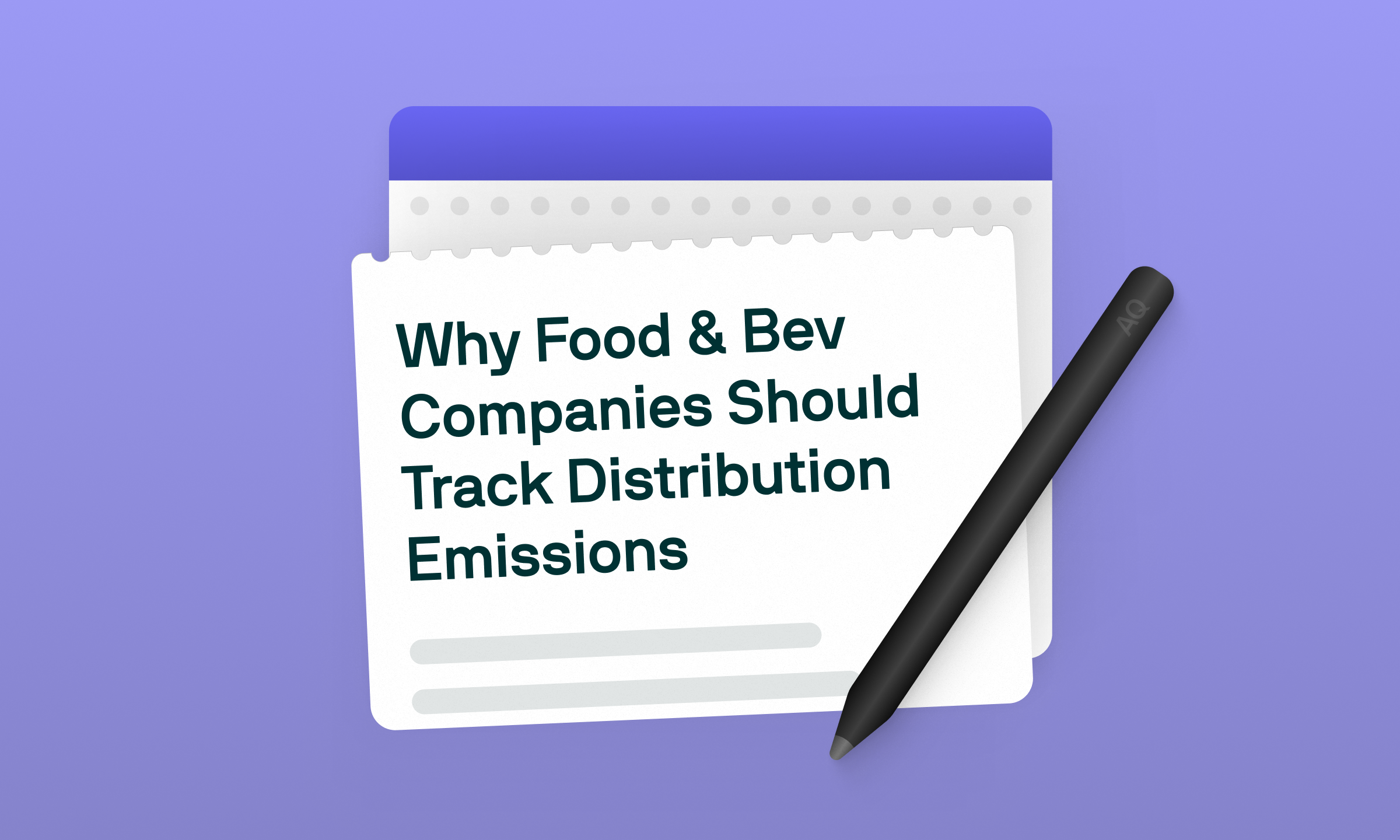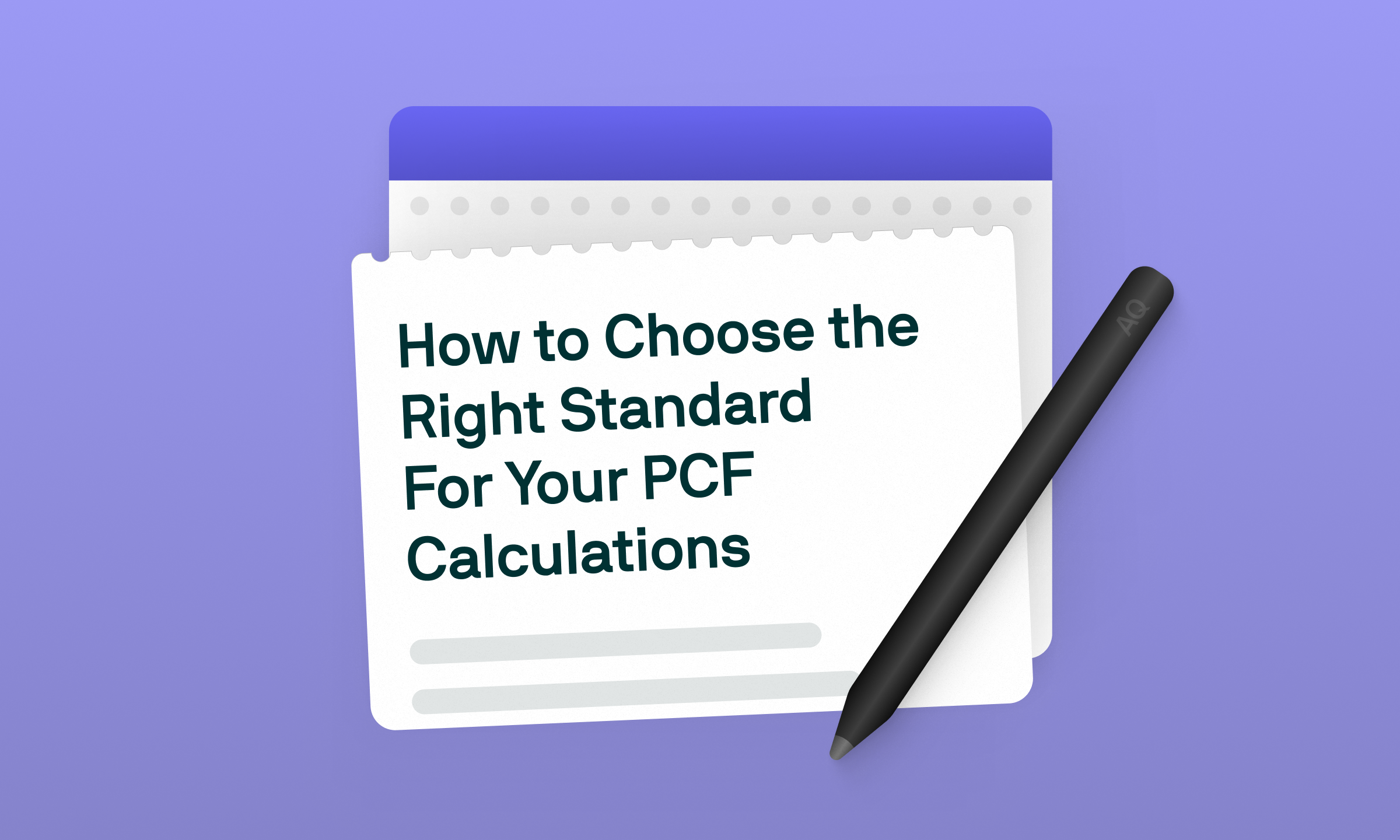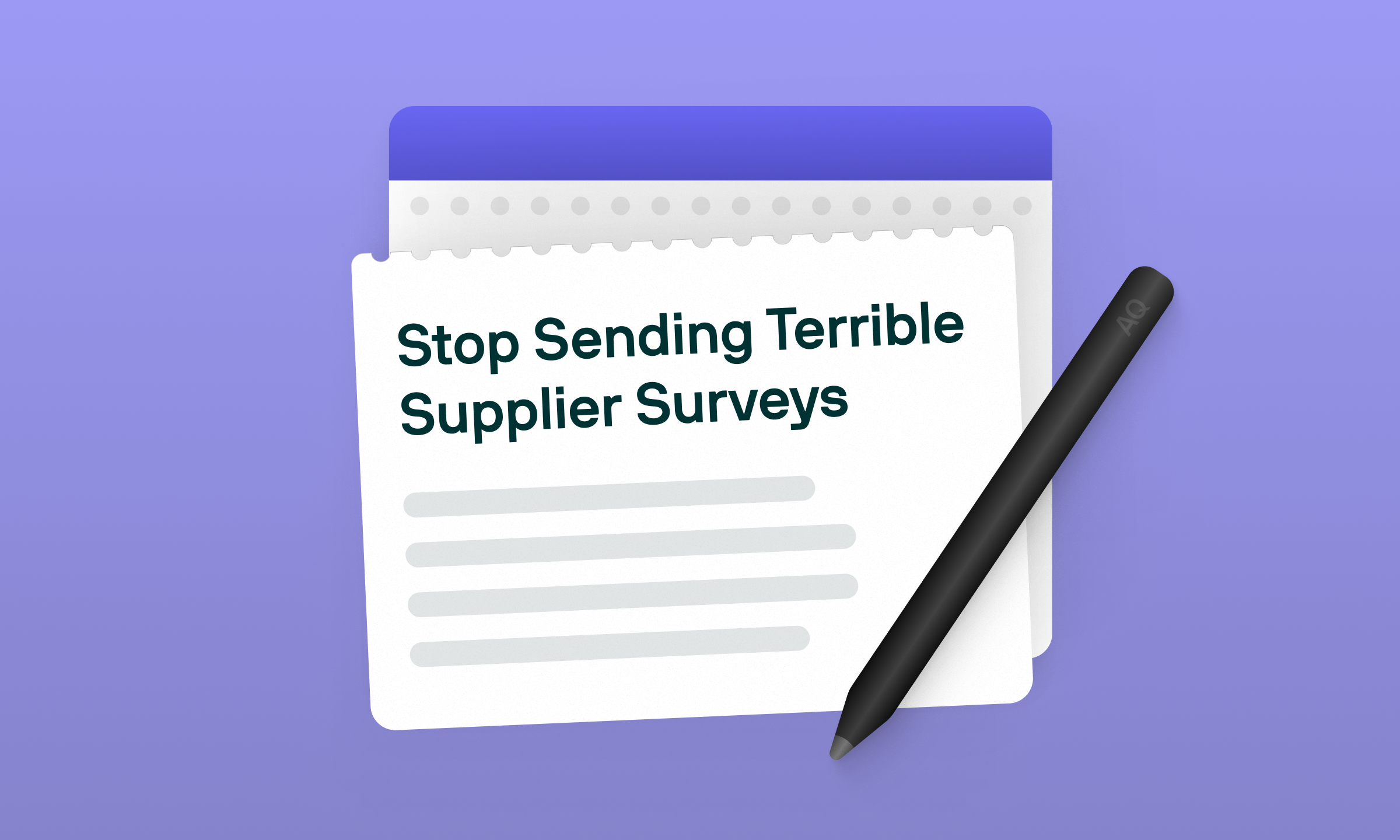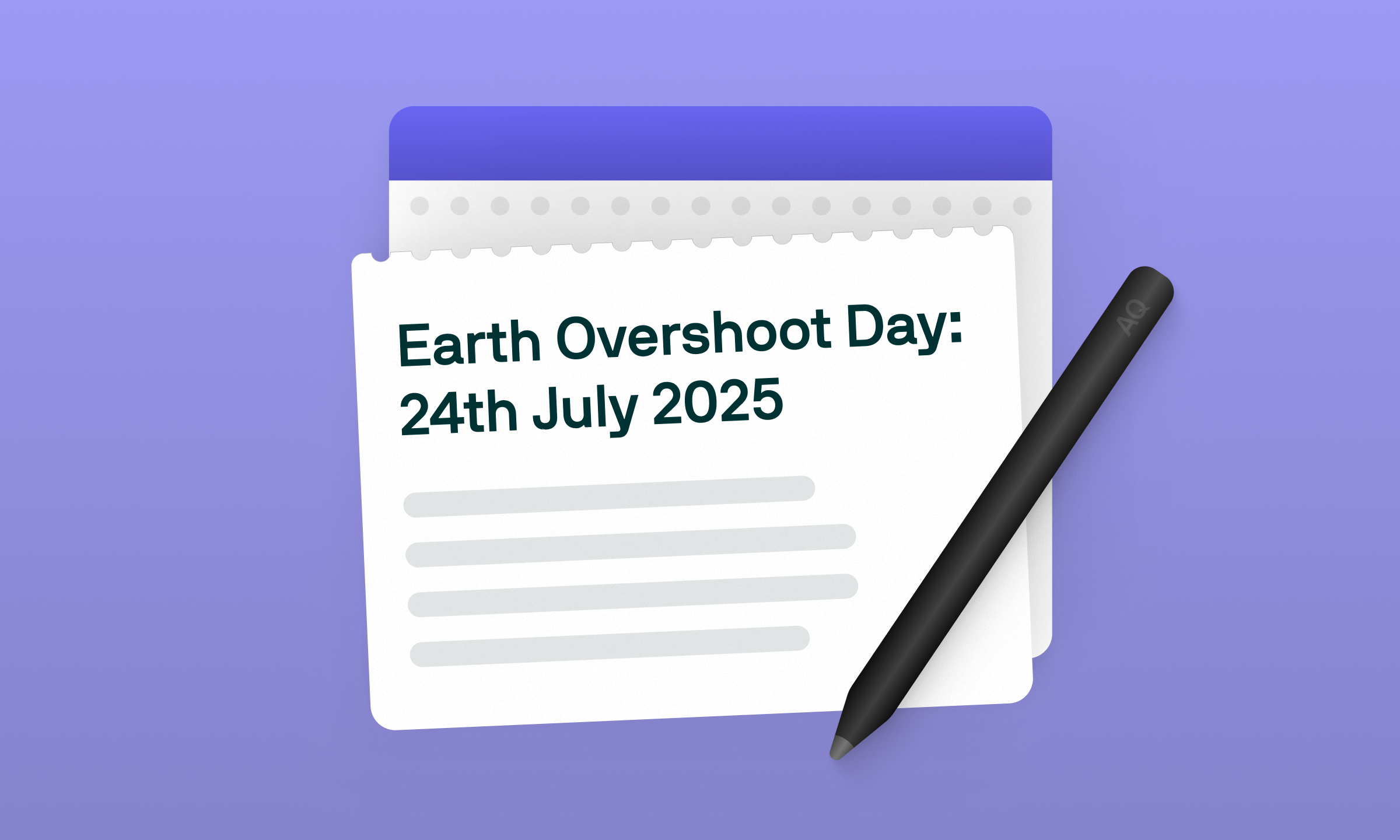The Ingredients of Good Supplier Engagement

What you'll learn



Introduction
As we all know, up to 90% of companies’ emissions fall within their supply chain (the notorious Scope 3). With corporate supply chain emissions 26x greater than operational emissions, supply chain engagement is not an option - it’s a necessity. For the last few years we've known this as an industry, but struggled to get a real handle on 'what makes good Supply Chain Engagement' and how to even start doing it. This article shares some of our key learnings for engaging supplier effectively and delivering meaningful reductions across the supply chain:
- Prioritise Your Suppliers Strategically
- Optimise Data Collection Through PCFs
- Foster Genuine Collaboration
💡 Supplier Engagement: What is It?
Supplier engagement is a strategic approach where businesses actively collaborate with suppliers to achieve sustainability objectives.
It goes beyond traditional buyer-supplier transactions to create long-term partnerships focused on shared goals like reducing carbon emissions, improving sustainability practices, enhancing operational efficiency, and meeting regulatory requirements.
1. Prioritise Your Suppliers Strategically
You can't tackle your whole supply chain all at once. So, instead of spreading your resources thin across your entire pool of suppliers, select and prioritise key ones to focus on.
In fact, we’ve observed that for many Food and Beverage companies, approximately 80% of supply chain emissions come from just 20% of their suppliers. By narrowing engagement efforts on this critical subset of suppliers, companies can maximise their impact while keeping the programme manageable and effective.

To prioritise your suppliers strategically, you should:
- Identify Emissions Hotspots: First, consider the emissions impact. Start by identifying your highest-emitting suppliers, typically focusing on 20-50 suppliers who might represent the vast majority of supply chain emissions.
- Add a Commercial Lens: Second, evaluate the commercial relationship. The amount you buy from a supplier and strategic importance of the supplier relationship play crucial roles in prioritisation. A supplier might have high emissions but low spend volume, or vice versa. The key is to consider both factors together - prioritising suppliers where both the potential environmental impact and the strength of the commercial relationship create opportunities for meaningful change.
- Create Different Supplier Categories: Create categories of suppliers per product type or raw material (e.g. glass or wheat) and standardise intervention suggestions based on the specific needs of each group. Start working with the categories where you can achieve the biggest impact, considering both the emissions intensity of the materials and your ability to influence change within that supplier group. Consider the maturity level of suppliers in their sustainability journey when creating these categories - some may be ready for advanced collaboration, while others might need more support and education.
2. Optimise Data Collection Through PCFs
There are three main ways through which you can collect data from your suppliers - from basic to mature approaches:
- High Level Surveys: This is the most traditional yet basic approach. It involves gathering basic sustainability information across the supplier base. While it provides broad coverage, the data collected often feels like more of a tick box exercise and fails to generate meaningful insights on how a company is already decarbonising or could find opportunities to decarbonise.
- Environmental Data Surveys: This approach collects specific activity data from suppliers. This provides more actionable insights but requires more effort from both the company and its suppliers.
- Product Carbon Footprints (PCFs): This is the approach we implement in our supplier programs, as it enables customers to capture supplier-specific data in reporting, substituting a secondary emission factors for a more accurate supplier PCF in their Scope 3 and enables companies to track their suppliers’ decarbonisation progress at the product-level.
💡 PACT: When Should You Use It?
The PACT framework (backed by WBCSD) is a valuable tool for standardising environmental data sharing. But, suppliers need to develop their data collection capabilities before they can share data via PACT standards. To support suppliers through this evolution you can invest in tools and resources to help suppliers calculate their emissions and provide education and training on the value of Product Carbon Footprint (PCF) calculation and exchange.
In general, when requesting environmental data from suppliers it’s important to:
- Define the scope of your data collection: Specify the types of data you need (e.g., emissions factors, energy consumption, waste metrics) and how granular this needs to be (e.g. include FLAG vs non-FLAG breakdown).
- Communicate the ‘why’: Make sure suppliers understand why the data is important — not just for your company but also for improving their operations and environmental impact. Focus on collecting data that serves a clear purpose rather than gathering information for its own sake.
- Lead by inspiration: Share examples of how suppliers’ data has led to positive sustainability outcomes in similar contexts, emphasising the shared value.
The further you get into your program, the easier it will be to overcome common data challenges, such as:
- Quality: Reporting accuracy will improve as suppliers gain experience in collecting and sharing data.
- Integration: At first, data will probably be fragmented across different platforms and sources. However, with time you can move towards integrated systems.
- Quantity: Suppliers may initially share limited data. As trust builds and suppliers familiarise themselves with the ask, the process of completing the data request and the reasons behind it, they typically become more comfortable sharing comprehensive information.
3. Foster Genuine Collaboration
Really effective supplier engagement goes beyond data collection to build lasting partnerships. There are different stages to this:
- Launch Targeted Initiatives: Create dedicated programs for key suppliers that combine data collection and knowledge-sharing. These should be tailored for regions and industries. To drive successful initiatives, your procurement and sustainability teams need to be aligned.
- Set Clear Supplier Requirements: Define requirements to encourage accountability and consistency, such as setting a science-based emissions reduction targets, measuring product level emissions, purchasing renewable energy or including sustainability clauses into contracts to mandate data sharing.
- Incentivise: Use recognitions and rewards to motivate suppliers e.g. contract extensions or volume increases. Consider offering financial support for sustainable improvements, such as helping suppliers invest in renewable energy or efficient technologies.
- Enable Peer Learning: Facilitate connections between suppliers to accelerate progress. e.g. Industry workshops can create powerful opportunities for knowledge sharing. While protecting intellectual property remains important, these forums can spark innovation and accelerate progress across the industry.
- Enable Continuous Improvement: Regularly review and adapt your strategies to align with new regulations, industry shifts, and evolving supplier capabilities. Set clear, measurable goals and track performance with KPIs that reflect both supplier and business objectives. Embrace the concept of co-development with your suppliers. Their perspectives can offer fresh insights. As your organisation matures, expand your focus beyond Tier 1 suppliers to the next relevant group of businesses to work with.

Additional Resources
Watch our digital event on demand to understand how focusing on Product Carbon Footprints (PCF) exchange can transform decarbonisation efforts along your supply chain.


.svg.webp)






.png)



